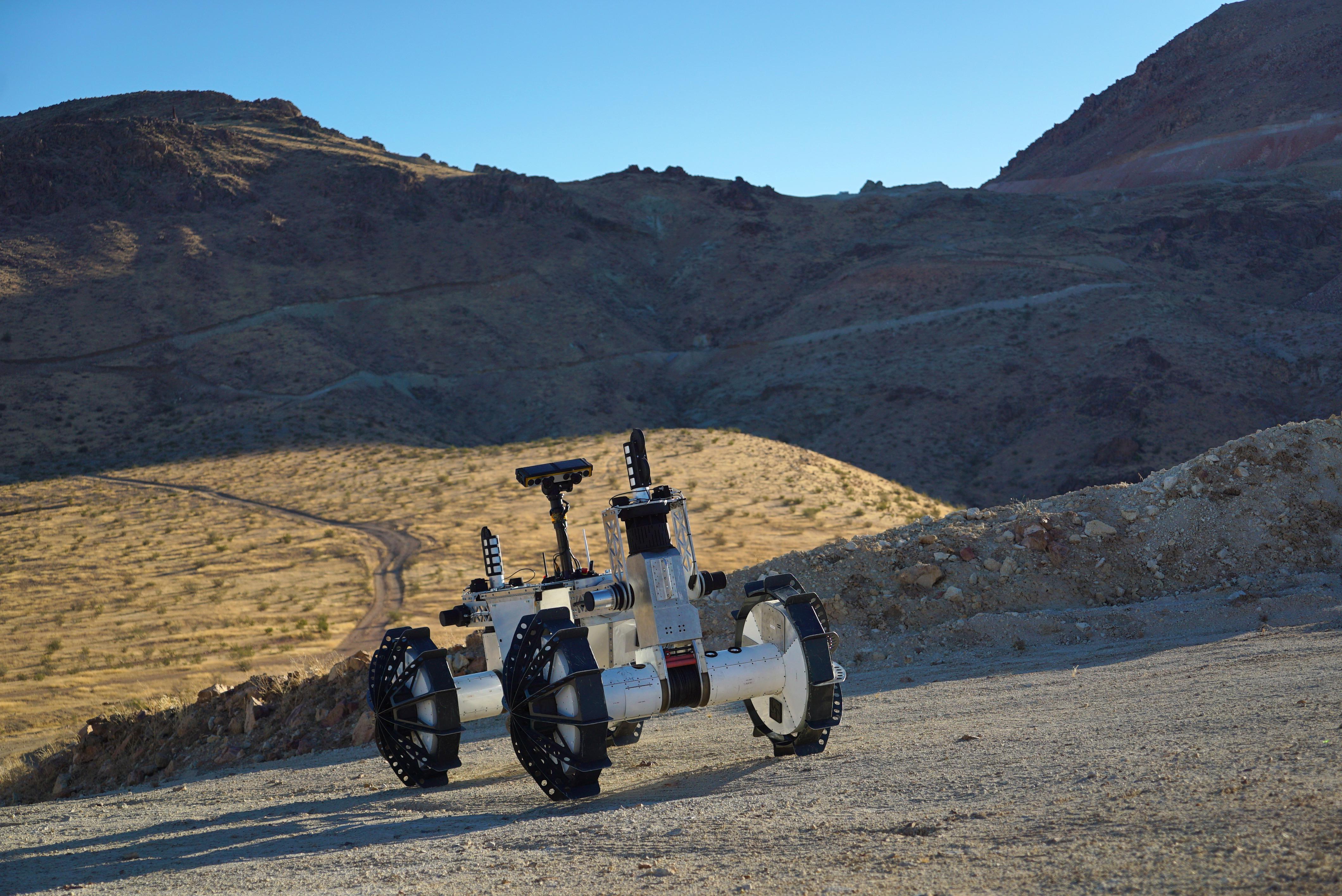
|
The DuAxel Rover During a Field Test in California’s Mojave Desert
- Click the image above for a larger view
- Full-Res JPEG (4240 x 2832) (1.4 MB)
- Full-Res TIFF (4240 x 2832) (33.9 MB)
Caption:
The DuAxel rover participates in a field test in the Mojave Desert in California. The four-wheeled rover is composed of two separate two-wheeled Axel robots , which are attached to one another via a tether. When the robot needs to travel to over long distances, it operates as one conventional rover with four wheels. Once it reaches its destination, it can separate and transform into two robots: One part anchors itself in place while the other uses a tether to explore otherwise inaccessible terrain.
This flexibility was built with crater walls, pits, scarps, vents, and other extreme terrain in mind. That's because on Earth, some of the best locations to study geology can be found in rocky outcrops and cliff faces, where many layers of the past are neatly exposed. They're hard enough to reach here, let alone on the Moon, Mars, and other celestial bodies.
Background Info:
The DuAxel project is a technology demonstration being developed by roboticists at NASA's Jet Propulsion Laboratory in Southern California to see how this unconventional rover might fill a niche in planetary exploration.
Cataloging Keywords:
| Name | Value | Additional Values |
|---|---|---|
| Target | Mars | |
| System | ||
| Target Type | Planet | |
| Mission | DuAxel Project | |
| Instrument Host | ||
| Host Type | ||
| Instrument | ||
| Detector | ||
| Extra Keywords | Color, Crater | |
| Acquisition Date | ||
| Release Date | 2020-10-13 | |
| Date in Caption | ||
| Image Credit | NASA/JPL-Caltech/J.D. Gammell | |
| Source | photojournal.jpl.nasa.gov/catalog/PIA24108 | |
| Identifier | PIA24108 | |
